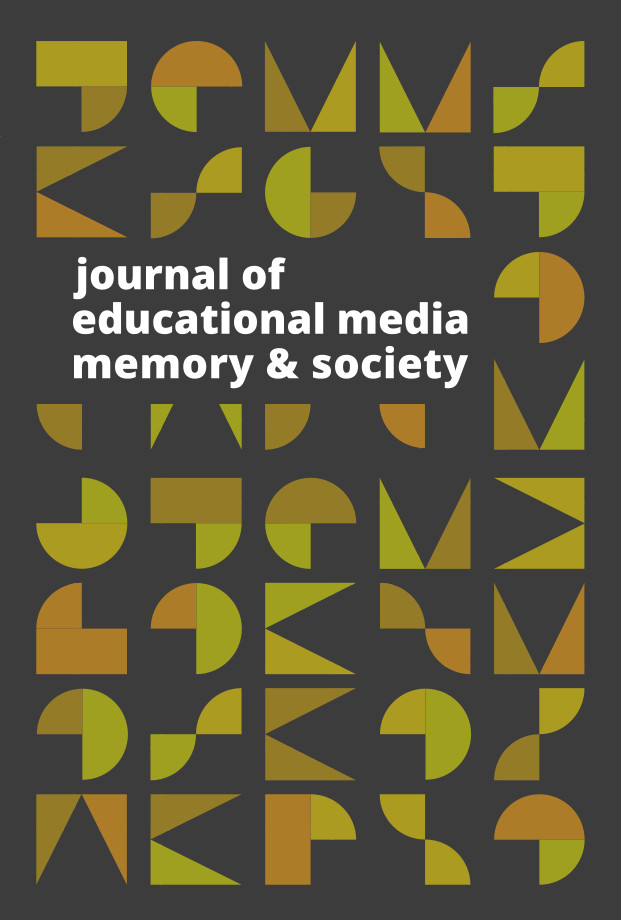
Journal of Educational Memory, Media, and Society
ISSN: 2041-6938 (print) • ISSN: 2041-6946 (online) • 2 issues per year
Editor: Eckhardt Fuchs, Leibniz Institute for Educational Media | Georg Eckert Institute
Subjects: Education, Media, Social Sciences
![]() Available on JSTOR
Available on JSTOR

Published on behalf of the Leibniz Institute for Educational Media | Georg Eckert Institute
Latest Issue
Volume 16 Issue 2
A Tale of Two Fairs
Exhibitions, Education, and Empire in the Early Twentieth Century
This article examines the use of world's fairs and other expositions in the early twentieth century in order to showcase educational ideas from American overseas imperial settings. In particular, the 1904 St. Louis World's Fair and the 1915 Panama-Pacific International Exposition demonstrate the nature of American imperial schooling and its changes over a decade. Fairs and exhibitions like these were important sites where educational ideas were exchanged between the colony and metropole, and they allowed experiments being trialed overseas to influence the nature of school reform back in the United States during the Progressive Era.
The Image of the Chinese Nation in German Textbooks
Quantitative Content Analyses of History, Geography, and Civics Textbooks
One aim of secondary education is to convey informed and multilayered notions, rather than simplistic stereotypes, about other nations. In this context, textbook materials play a decisive role as teaching aids. In this article, we analyze representations of China in seventy-one secondary school textbooks from two federal states in Germany. We used complementary frequency and latency analyses to examine textbook elements, topics, topic valences, language valences, and contextualized image valences. An analysis of 1,806 coded segments revealed several forms of bias, including a selective choice of topics, negative stereotypes in headings and images, and negative language valences in text sources. Here, we evaluate these findings against the background of the intended educational goal of constructing an informed and balanced image of the nation.
The Writing of History and the Conception of Time in the Narrative of Afghanistan
A Comparison of School History Textbooks from 1998 to 2021
This article examines school history textbooks in Afghanistan and investigates the particular ways in which conceptualizations of temporality, history, and the use of calendars contribute toward the construction of the national narrative. It investigates three generations of history textbooks, published between 1998 and 2021 under the Islamic Emirate of the Taliban (one generation) and the Islamic Republic of Afghanistan (two generations), respectively. The findings show that the textbooks of the Islamic Emirate and the first-generation textbooks of the Islamic Republic of Afghanistan tend toward a religious conception of time and history, while the second-generation textbooks of the Islamic Republic of Afghanistan tend toward a secular progressive conception of time and history. The use of calendars in the textbooks evinces narrative and genre hybridity and ideological preferences.
World–Local Culture Clash and Compromise
The Nominal Gender Equality Discourse in Afghanistan School Textbooks from 2001 to 2021
This article analyzes the gender equality discourse in two generations of school textbooks from Afghanistan published between 2001 and 2021. Informed by world polity theory and employing a multimodal quantitative and qualitative content analysis, the study focuses on world–local culture interactions and their impacts on the conception of gender discourse in the textbooks. The findings indicate that world–local cultures compromise and clash at the same time, leading to both the coupling and decoupling of universal gender discourse in relation to local contexts. Against this backdrop, despite the consistency between said discourse and world culture, the textbook depictions render gender equality nominal and stereotypical, while the gender system therein is discriminatory against women.
Free from Gender Bias?
An Analysis of Gender Representations in Civics and Mathematics Textbooks for Primary Schools in Albania
This article assesses the depiction of gender in texts and pictures contained in civics and mathematics textbooks currently in use from year one to year five in primary schools in Albania. I carry out quantitative analysis in order to examine whether males and females are equally represented in terms of sex, age, designations, activities, and attributes ascribed to the characters, applying a method advanced by Carole Brugeilles and Sylvie Cromer, as well as qualitative analysis in order to investigate potential gender stereotypes in textbooks. The findings reveal that textbooks are not gender-responsive and that pupils are encountering more males than females in them. Both genders are described with stereotyped attributes, which reinforce traditional perceptions of their roles. Moreover, they convey a gendered division between males’ and females’ participation in the public and private spheres.
Chatting about the Past with Artificial Intelligence
A Case Study of Pupils’ Interaction with ChatGPT while Completing a History-Learning Task
Generative artificial intelligence (AI) offers new opportunities for history education, such as the ability to chat with historical figures. However, little is known about pupils’ interaction with AI applications such as ChatGPT. A qualitative case study was conducted to explore how pupils (n = 21, year nine, fourteen years old) interacted with ChatGPT while completing a history-learning task that involved interviewing the chatbot of a historical figure. The resulting chat protocols were analyzed using grounded theory, focusing on a sociocultural approach to history education and concepts from human–machine communication (HMC). The findings suggest that pupils’ interaction with AI can be seen as a kind of human–machine communication involving specific types of history-related prompts from humans and particular responses from AI. Based on these findings, the article discusses implications for further research and practice.